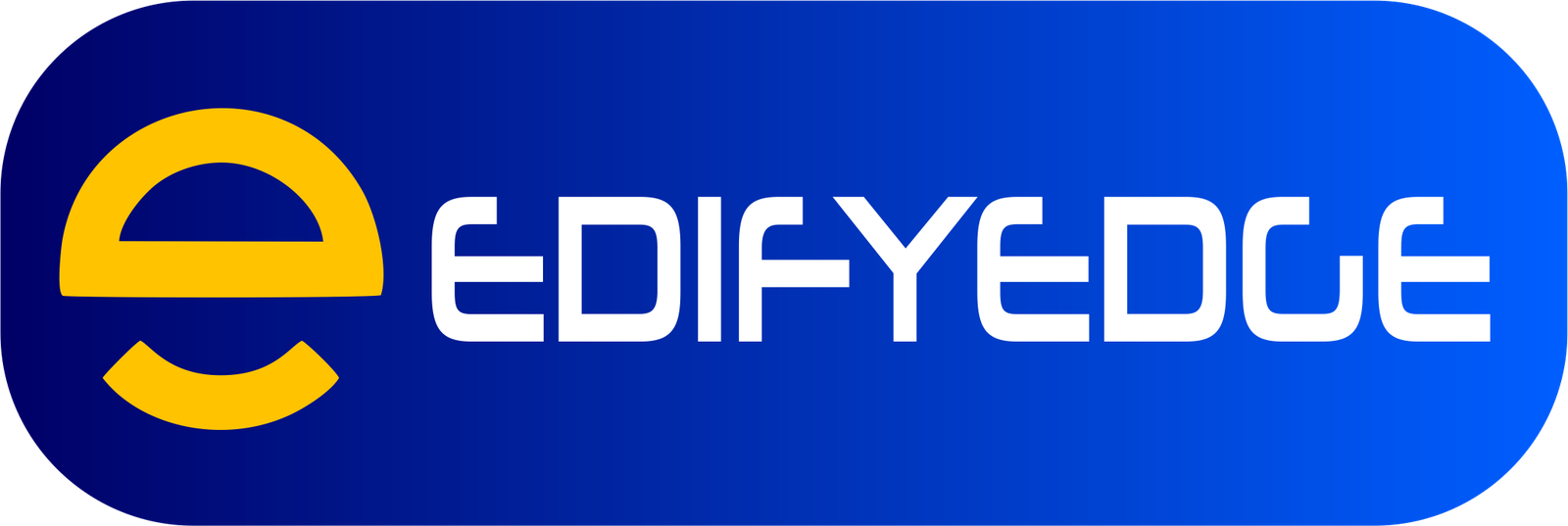Introduction to Home Improvement Loans
Home improvement loans are a type of financing specifically designed to help homeowners fund various renovation, repair, or upgrade projects for their properties. These loans provide the necessary funds to enhance the value, functionality, or aesthetics of a home, allowing homeowners to tackle projects that might otherwise be unaffordable or require significant upfront costs.
The primary purpose of home improvement loans is to give homeowners access to the capital they need to transform their living spaces, address maintenance issues, increase energy efficiency, or adapt their homes to changing needs or preferences. By leveraging these loans, homeowners can invest in their properties without depleting their savings or relying solely on credit cards, which often carry higher interest rates.
Home improvement loans offer several benefits to homeowners, including:
-
Financing Flexibility: These loans are available in various forms, such as personal loans, home equity loans, or home equity lines of credit (HELOCs), allowing homeowners to choose the option that best suits their financial situation and project requirements.
-
Potential Tax Benefits: Depending on the type of loan and the nature of the home improvements, the interest paid on home improvement loans may be tax-deductible, providing additional savings for homeowners.
-
Increased Home Value: Many home improvement projects, such as kitchen or bathroom remodels, additions, or energy-efficient upgrades, can significantly enhance the value of a property, potentially recouping a portion of the investment when the home is sold.
-
Improved Living Conditions: Home improvement loans enable homeowners to create more comfortable, functional, and aesthetically pleasing living environments, enhancing their overall quality of life and enjoyment of their homes.
By understanding the purpose and benefits of home improvement loans, homeowners can make informed decisions about financing their desired projects and unlocking the full potential of their properties.
Types of Home Improvement Loans
Home improvement projects can be financed through various types of loans, each with its own advantages and considerations. Here are some of the most common options:
Personal Loans: Unsecured personal loans can provide a lump sum of cash for home improvements. These loans are based on your creditworthiness and typically have fixed interest rates and repayment terms. Personal loans are a good choice for smaller projects and can be obtained relatively quickly.
Home Equity Loans: If you have built up equity in your home, you can borrow against that equity through a home equity loan. These loans provide a lump sum of cash, and the amount you can borrow depends on the value of your home and your outstanding mortgage balance. Home equity loans often have lower interest rates than personal loans, but they require using your home as collateral.
Home Equity Lines of Credit (HELOCs): A HELOC is a revolving line of credit secured by the equity in your home. You can borrow against the line as needed, making it a flexible option for ongoing or phased home improvement projects. HELOCs typically have variable interest rates, and you’ll only pay interest on the amount you’ve borrowed.
Cash-out Refinancing:
With a cash-out refinance, you take out a new mortgage loan that is larger than your existing mortgage, allowing you to pocket the difference in cash. This option can provide a substantial amount of funds for major renovations, but it also involves closing costs and the potential for a higher interest rate on your new mortgage.
Contractor Financing: Some contractors offer financing options for home improvement projects they undertake. These financing plans may come with promotional interest rates or deferred payment plans, but they often have higher interest rates and less favorable terms than traditional loans. Contractor financing can be convenient, but it’s essential to carefully review the terms and compare them to other loan options.
Each loan type has its advantages and drawbacks, so it’s crucial to consider your specific project needs, financial situation, and long-term goals before choosing the best financing option.
Factors to Consider Before Taking a Home Improvement Loan
Before taking out a home improvement loan, it’s crucial to evaluate several factors to ensure you’re making a financially sound decision. These factors include the project cost, your equity in the home, credit score, income and debt-to-income ratio, and the loan terms and interest rates.
Project Cost: Accurately estimating the cost of your home improvement project is essential. Underestimating the cost can lead to insufficient funds, causing delays or incomplete work. Consider obtaining multiple quotes from contractors, accounting for materials, labor, and potential unexpected expenses.
Equity in the Home: Your home equity, which is the difference between your home’s value and the remaining mortgage balance, plays a significant role in determining your loan options and terms. Lenders often require a certain amount of equity to approve a home improvement loan, as the equity serves as collateral.
Credit Score:
Your credit score is a crucial factor that lenders consider when evaluating your loan application. A higher credit score typically qualifies you for better interest rates and loan terms. If your credit score is low, you may want to work on improving it before applying for a loan to secure more favorable terms.
Income and Debt-to-Income Ratio: Lenders will assess your income and debt-to-income ratio to determine your ability to repay the loan. Your debt-to-income ratio is calculated by dividing your monthly debt payments by your gross monthly income. A lower debt-to-income ratio increases your chances of loan approval and better terms.
Loan Terms and Interest Rates: Carefully review the loan terms and interest rates offered by different lenders. Longer loan terms may result in lower monthly payments but higher overall interest costs. Conversely, shorter loan terms typically have higher monthly payments but lower overall interest costs. Shop around and compare offers from multiple lenders to find the most favorable terms for your situation.
By carefully considering these factors, you can make an informed decision about whether a home improvement loan is the right choice for your financial situation and project needs.
Qualifying for a Home Improvement Loan
Qualifying for a home improvement loan typically involves meeting certain credit score requirements, income and employment verification, debt-to-income ratio calculations, and home equity requirements. Lenders want to ensure that borrowers have the financial capacity to repay the loan, and they use these criteria to assess the risk involved.
Credit Score Requirements
Your credit score is one of the most crucial factors lenders consider when evaluating your loan application. Generally, a higher credit score indicates a lower risk of default, and lenders are more likely to approve your loan application and offer better interest rates. Most lenders require a minimum credit score of 620 or higher for home improvement loans, but some may accept lower scores with additional conditions or higher interest rates.
Income and Employment Verification
Lenders will also verify your income and employment status to ensure that you have a stable source of income to make loan repayments. You may need to provide pay stubs, tax returns, and other documentation to prove your income and employment. Self-employed individuals may need to provide additional documentation, such as business tax returns and profit and loss statements.
Debt-to-Income Ratio Calculations
Your debt-to-income ratio (DTI) is another critical factor lenders consider. This ratio compares your monthly debt payments (including the proposed loan payment) to your monthly gross income. Lenders typically prefer a DTI ratio below 43%, but some may accept higher ratios depending on your overall financial situation and other compensating factors.
Home Equity Requirements
If you’re applying for a home equity loan or a home equity line of credit (HELOC), lenders will consider the amount of equity you have in your home. Equity is the difference between your home’s value and the outstanding mortgage balance. Lenders may require a minimum amount of equity, usually 15% to 20% of your home’s value, to approve your loan application.
It’s essential to gather all the required documentation and be prepared to provide detailed information about your financial situation. Lenders may also request additional documentation or clarification depending on your individual circumstances. By meeting the qualifying criteria, you increase your chances of being approved for a home improvement loan with favorable terms.
Using Home Improvement Loans for Specific Projects
Home improvement loans can be used for a wide range of projects, from minor renovations to major overhauls. Some of the most common uses include:
Bathroom and Kitchen Remodels
Kitchens and bathrooms are often the focal points of home renovations, as they can significantly impact a home’s functionality and resale value. Home improvement loans can help finance the costs of new cabinets, countertops, appliances, plumbing fixtures, and other upgrades.
Additions and Expansions
Whether you’re adding a new room, expanding your living space, or building a home addition, home improvement loans can provide the necessary funds. These projects can be costly, but they can also increase your home’s value and improve your quality of life.
Energy-Efficient Upgrades
Many homeowners use home improvement loans to finance energy-efficient upgrades, such as installing solar panels, replacing windows and doors, or upgrading insulation. These improvements can not only reduce your energy bills but also increase your home’s eco-friendliness and appeal to environmentally conscious buyers.
Landscaping and Outdoor Improvements
Home improvement loans can also be used for outdoor projects, such as landscaping, building decks or patios, installing fences or retaining walls, or constructing outdoor living spaces. These improvements can enhance your home’s curb appeal and provide additional living and entertainment areas.
When considering a home improvement loan, it’s essential to carefully evaluate the scope of your project, estimate the costs, and ensure that the loan amount and repayment terms align with your budget and financial goals.
Calculating Loan Costs and Repayment
When considering a home improvement loan, it’s crucial to understand the associated costs and repayment terms. These factors can significantly impact the overall cost of the project and your long-term financial obligations.
Interest Rates: Interest rates are one of the most significant expenses associated with a loan. Home improvement loans typically have fixed or variable interest rates. Fixed rates remain constant throughout the loan term, while variable rates fluctuate based on market conditions. Generally, fixed rates are higher than variable rates initially but provide stability and predictability in repayment.
Loan Fees
Lenders often charge various fees when issuing a home improvement loan. These may include origination fees, application fees, appraisal fees, and closing costs. It’s essential to understand all the fees involved and factor them into the overall cost of the loan.
Monthly Payment Calculations: Your monthly payment amount depends on the loan amount, interest rate, and repayment term. Lenders typically use an amortization schedule to calculate the monthly payment, which includes both principal and interest portions. A longer repayment term results in lower monthly payments but higher overall interest costs.
Amortization Schedules: An amortization schedule is a detailed breakdown of each monthly payment, showing how much goes toward the principal and how much covers the interest. Early in the loan term, a larger portion of the payment goes toward interest, but as time passes, more of the payment is applied to the principal balance.
Prepayment Penalties: Some lenders may charge a prepayment penalty if you pay off the loan before the end of the term. This fee is designed to compensate the lender for the lost interest revenue. It’s essential to understand the prepayment terms and associated costs before committing to a loan.
When evaluating home improvement loan options, it’s advisable to use online calculators or spreadsheets to estimate the total cost of the loan, including interest and fees. This will help you make an informed decision and budget accordingly for the project and repayment.
Tax Benefits of Home Improvement Loans
Taking out a loan for home improvements can provide valuable tax benefits. One of the primary advantages is the potential deductibility of interest payments on the loan. If the loan is secured by your primary residence and used for eligible home improvements, the interest paid may qualify as deductible mortgage interest on your tax return.
To be eligible for the mortgage interest deduction, the home improvements must be considered qualified residence improvements. These typically include additions or renovations that add value to your home, prolong its useful life, or adapt it to new uses. Examples of eligible projects include room additions, kitchen or bathroom remodels, energy-efficient upgrades, and accessibility modifications.
However, it’s important to note that the deduction is subject to certain limitations and eligibility criteria. The loan amount must be within the acquisition debt limits set by the IRS, and your total mortgage debt (including the home improvement loan) cannot exceed the cost of your home plus any substantial improvements.
Keeping meticulous records is crucial when claiming the mortgage interest deduction for home improvement loans. You should maintain documentation such as loan statements, receipts for materials and labor, and before-and-after photos to substantiate the eligible improvements made to your home.
It’s also advisable to consult with a tax professional or review the IRS guidelines to ensure you meet all the requirements for deducting the interest paid on your home improvement loan. Proper planning and documentation can help you maximize the tax benefits associated with financing your home renovations.
Comparing Lenders and Loan Options
When it comes to securing a home improvement loan, you have several options to consider, including banks, credit unions, and online lenders. Each type of lender offers its own advantages and disadvantages, so it’s essential to compare them carefully to find the best fit for your needs and financial situation.
Banks: Traditional banks are often the first place homeowners turn to for home improvement loans. Banks typically offer competitive interest rates and a wide range of loan products, including home equity loans, home equity lines of credit (HELOCs), and personal loans. However, banks may have stricter credit requirements and longer application processes compared to other lenders.
Credit Unions: Credit unions are member-owned financial institutions that can be a great alternative to banks for home improvement loans. They often offer lower interest rates and fees than banks, as well as more personalized service. However, credit unions may have more limited loan options and stricter membership requirements.
Online Lenders:
In recent years, online lenders have become a popular option for home improvement financing. These lenders offer a convenient and streamlined application process, often with faster approval times than traditional lenders. Online lenders may also have more flexible credit requirements, making them a good choice for borrowers with less-than-perfect credit. However, interest rates and fees can vary widely among online lenders, so it’s important to shop around and compare offers carefully.
When comparing lenders and loan options, it’s essential to consider factors such as interest rates, fees, repayment terms, and customer service. Interest rates can significantly impact the overall cost of your loan, so it’s crucial to shop around for the best rates available. Fees, including origination fees, closing costs, and prepayment penalties, can also add up quickly, so be sure to understand all associated costs.
Repayment terms are another important consideration. Longer repayment periods may result in lower monthly payments, but you’ll pay more in interest over the life of the loan. Conversely, shorter repayment periods can save you money in interest but may come with higher monthly payments.
Finally, don’t overlook the importance of customer service and reviews. Look for lenders with a reputation for excellent customer service and positive reviews from past borrowers. This can help ensure a smooth and stress-free loan process and provide peace of mind throughout your home improvement project.
Home Improvement Loan Application Process
The application process for a home improvement loan typically involves several steps and requires you to provide various documents to the lender. Here’s what you can expect:
Documentation Required
Lenders will typically require you to submit the following documents:
- Proof of income (pay stubs, tax returns, etc.)
- Bank statements and other asset documentation
- Identification (driver’s license, passport, etc.)
- Homeowner’s insurance policy
- Contractor estimates or invoices for the planned home improvements
Income and Asset Verification
The lender will verify your income and assets to ensure that you have the ability to repay the loan. They may request additional documentation or clarification if needed.
Credit Checks
The lender will pull your credit report and credit score to assess your creditworthiness. A higher credit score generally qualifies you for better interest rates and terms.
Loan Approval and Closing
Once the lender has reviewed your application and supporting documents, they will make a decision on whether to approve or deny your loan request. If approved, you’ll proceed to the closing process, where you’ll sign the loan agreement and any other necessary paperwork. The lender will then disburse the funds, either directly to you or to the contractor performing the home improvements.
It’s essential to provide accurate and complete information throughout the application process to avoid delays or potential denial of your loan request.
Managing Home Improvement Projects with Loan Financing
Securing a home improvement loan is just the first step in a successful renovation project. Proper budgeting, planning, and project management are crucial to ensure your loan funds are utilized effectively and the project stays on track.
Budgeting and Project Planning
Before starting any work, create a detailed budget that accounts for all anticipated expenses, including materials, labor, permits, and contingencies. It’s essential to have a clear understanding of the project’s scope, timeline, and cost to avoid running out of funds mid-way. Consult with contractors, architects, or interior designers to get accurate cost estimates and develop a realistic timeline.
Contractor Selection and Management
Choosing the right contractor is pivotal to the success of your home improvement project. Research and vet multiple contractors, checking their licenses, insurance, references, and reviews. Once you’ve selected a contractor, ensure clear communication and establish expectations regarding the project timeline, budget, and quality standards. Regular on-site inspections and progress meetings can help identify and address any issues promptly.
Handling Unexpected Costs and Delays
Despite meticulous planning, unexpected costs and delays are common in home improvement projects. Set aside a contingency fund, typically 10-20% of the total budget, to cover unforeseen expenses or overruns. If you encounter significant cost increases or delays, communicate openly with your contractor and lender to explore solutions, such as modifying the project scope or renegotiating loan terms.
Effective project management is essential when using a home improvement loan. By carefully budgeting, planning, selecting the right contractor, and proactively addressing challenges, you can ensure your loan funds are utilized efficiently and your renovation project is completed successfully.
Alternatives to Home Improvement Loans
While home improvement loans can be a convenient financing option, they may not suit everyone’s needs or circumstances. Here are some alternatives to consider:
Savings and Cash Reserves: If you have sufficient savings or cash reserves, using them to fund your home improvement project can be a cost-effective option. This approach eliminates the need for interest payments and potential debt burden.
Credit Cards: Depending on the project’s cost and your credit card’s interest rate and limits, using a credit card for home improvements can be a viable alternative. However, it’s crucial to have a plan for repaying the balance promptly to avoid accumulating high-interest debt.
Borrowing from Retirement Accounts: Some retirement accounts, such as 401(k)s or IRAs, allow you to borrow against your savings. While this option provides access to funds without a credit check, it’s essential to understand the potential tax implications and repayment requirements to avoid penalties.
Government and Nonprofit Assistance Programs: Various government agencies and nonprofit organizations offer grants, low-interest loans, or other financial assistance programs for specific home improvement projects, such as energy efficiency upgrades or accessibility modifications. Eligibility criteria may vary, but exploring these options can be beneficial, especially for low-income homeowners.
It’s essential to carefully evaluate your financial situation, project scope, and long-term goals before deciding on the best financing option for your home improvement needs.
Home Improvement Loan Success Stories and Tips
Real-life examples of successful home improvement projects financed with loans can provide valuable insights for homeowners considering this financing option. Here are a few inspiring stories and expert tips:
The Kitchen Renovation Dream
John and Sarah had been saving for years to renovate their outdated kitchen. By taking out a home improvement loan, they were able to turn their dream into reality. With the loan funds, they hired a reputable contractor, replaced cabinets and countertops, and invested in energy-efficient appliances. Sarah, an avid home cook, now enjoys a beautiful and functional kitchen that has increased the value of their home.
The Accessibility Upgrade
After her mother suffered a fall, Emily knew she needed to make her home more accessible. A home improvement loan allowed her to install a stairlift, widen doorways, and convert a bathroom for wheelchair accessibility. Emily’s mother can now age in place comfortably and safely.
Expert Tip: Plan Ahead
“Before taking out a loan, homeowners should create a detailed plan and budget for their project,” advises experienced contractor Mark Thompson. “This helps ensure the loan amount covers all costs and prevents unexpected expenses down the line.”
The Energy-Efficient Overhaul
The Gonzalez family used a home improvement loan to finance a comprehensive energy-efficient upgrade, including new insulation, windows, and a high-efficiency HVAC system. Their monthly utility bills have decreased significantly, and the improvements have made their home more comfortable year-round.
Expert Tip: Research Contractors
“Don’t just hire the cheapest contractor,” warns homeowner Sarah. “Get multiple quotes, check references, and ensure they are licensed and insured. A reliable contractor can make all the difference in a successful home improvement project.”
By learning from these success stories and heeding expert advice, homeowners can confidently navigate the process of financing their home improvement dreams with a loan.
Future Trends in Home Improvement Financing
The home improvement financing landscape is rapidly evolving, driven by technological advancements and changing consumer preferences. One emerging trend is the rise of innovative loan products tailored specifically for home improvement projects. These specialized loans may offer more flexible terms, longer repayment periods, and potentially lower interest rates compared to traditional financing options.
Additionally, digital lending platforms are gaining traction, streamlining the application and approval processes for home improvement loans. These online platforms leverage advanced algorithms and data analysis to provide faster decision-making and a more convenient borrowing experience for homeowners.
As smart home technology becomes increasingly prevalent, we can expect to see greater integration between home improvement financing and these intelligent systems. Lenders may offer financing solutions that seamlessly integrate with smart home devices, enabling homeowners to finance upgrades and enhancements that improve energy efficiency, security, and overall home automation.
Sustainability and energy-efficiency financing options are also likely to gain prominence. With a growing emphasis on environmental consciousness and cost savings, lenders may introduce specialized loan products or incentives for homeowners undertaking eco-friendly renovations or installing energy-efficient appliances and systems.
Furthermore, the home improvement financing industry may witness increased collaboration and partnerships between lenders, contractors, and home improvement retailers. These collaborations could lead to bundled financing solutions, streamlined processes, and potentially discounted rates or incentives for homeowners who utilize these integrated services.
Overall, the future of home improvement financing promises greater convenience, personalization, and alignment with emerging technologies and sustainability goals, empowering homeowners to undertake renovations and upgrades with more accessible and tailored financing options.



